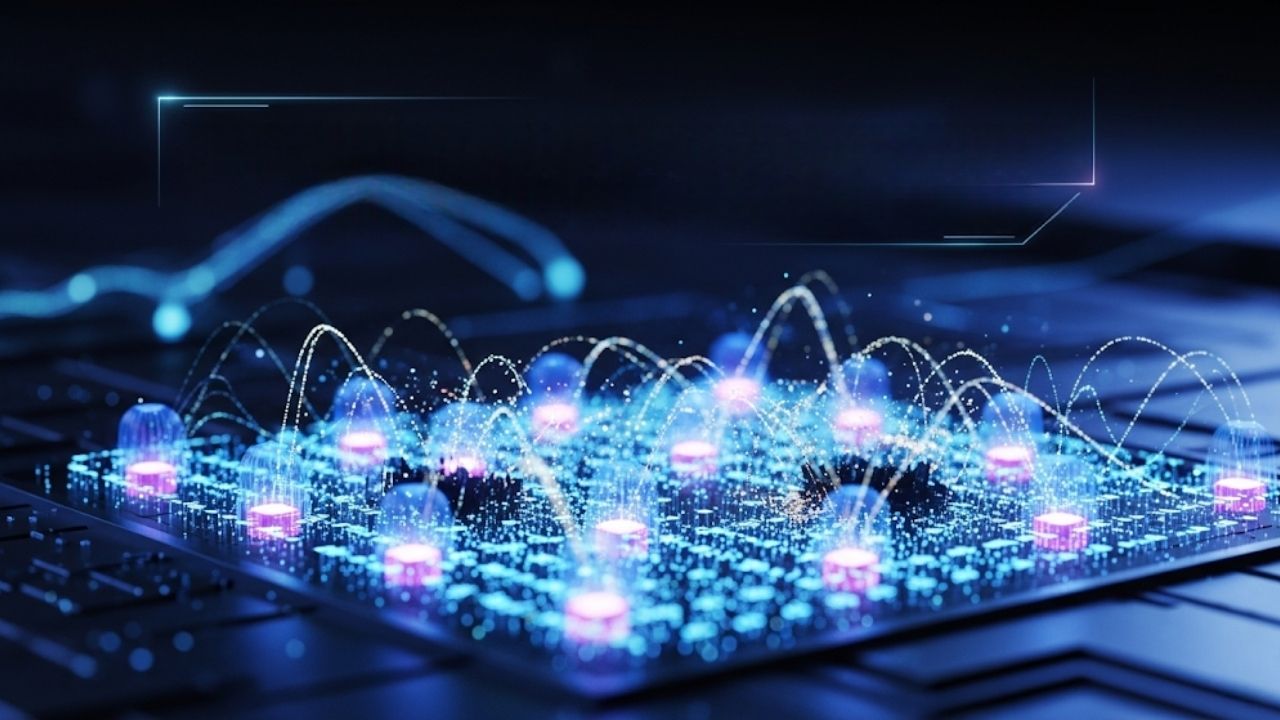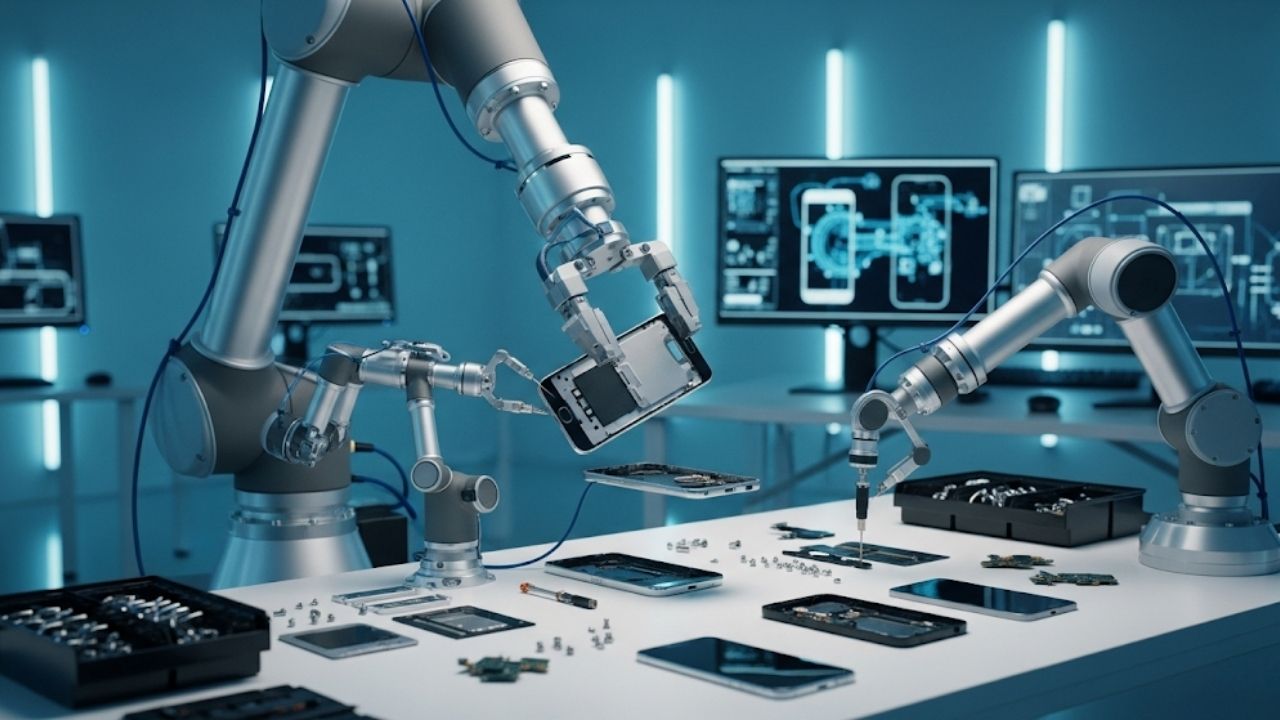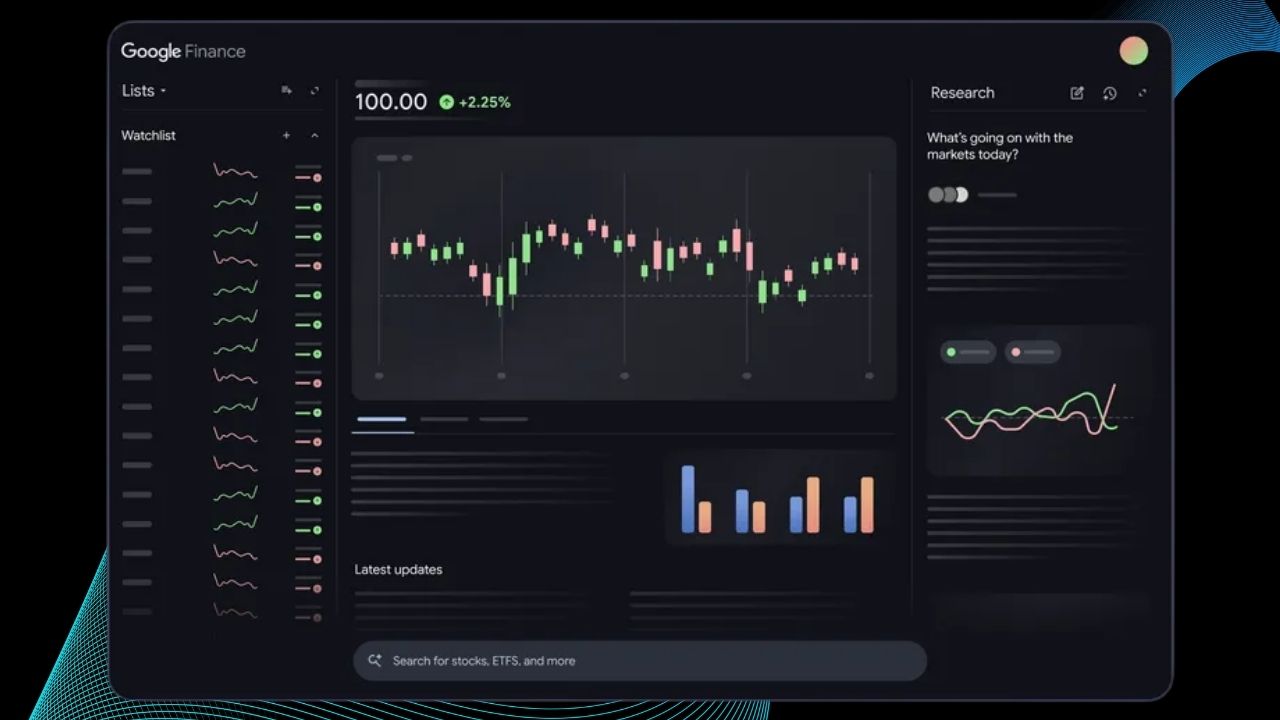The world of computing is on the verge of a transformation, and at the heart of this change is Intel’s Optical Compute Interconnect (OCI) chiplet. This cutting-edge technology promises to accelerate data transfers to a staggering 4 terabits per second (Tbps) using light, not electricity. For anyone interested in the future of computers—whether you’re a student, an IT professional, or a business leader—understanding this breakthrough is essential.
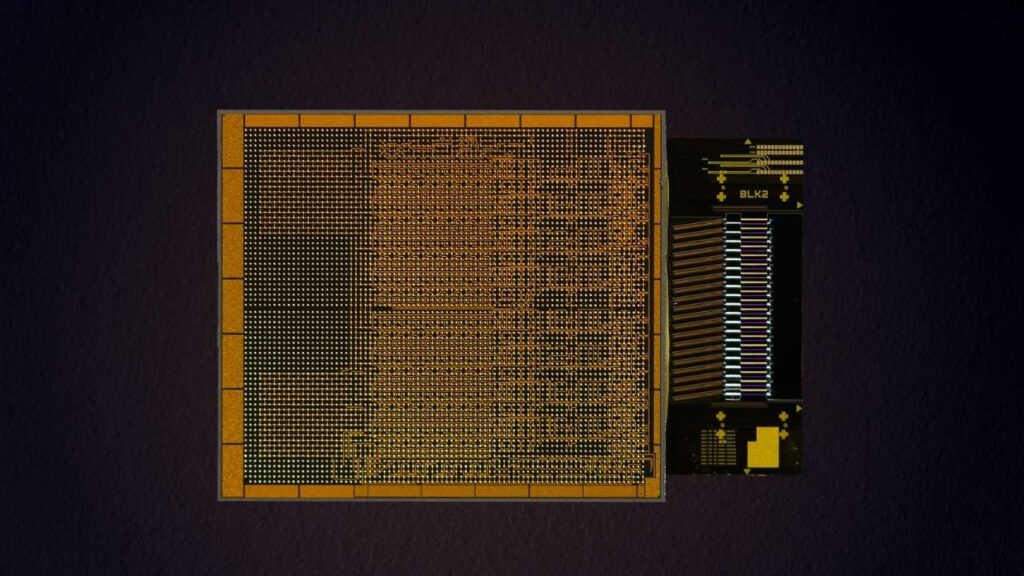
In this article, we’ll break down what Intel’s optical chiplet is, why it matters, how it works, and what it means for the future of computing. We’ll use clear examples, practical advice, and a friendly, conversational tone to make even the most complex details easy to understand.
Intel’s Optical Chiplet Breakthrough Promises 4 Tbps Light-Based Data Transfers
| Feature/Stat | Details |
|---|---|
| Data Transfer Rate | 4 Tbps (terabits per second), bidirectional |
| Channels Supported | 64 PCIe 5.0 channels, each at 32 Gbps |
| Energy Efficiency | 5 pico-Joules per bit (pJ/bit)—3x more efficient than traditional optical modules |
| Reach | Up to 100 meters using standard single-mode fiber |
| Latency | Less than 10 nanoseconds (plus time-of-flight) |
| Target Applications | AI, HPC, data centers, cloud computing, next-gen CPUs/GPUs/IPUs |
| Official Intel Silicon Photonics | Intel Silicon Photonics |
Intel’s Optical Chiplet Breakthrough is more than just a leap in speed—it’s a fundamental shift in how computers communicate. By harnessing the power of light, Intel is breaking through the limits of traditional electronics and paving the way for smarter, faster, and more energy-efficient computing. Whether you’re a student, a tech professional, or a business leader, this innovation is set to change the way we think about data, AI, and the future of technology.
What Is Intel’s Optical Chiplet and Why Does It Matter?
The Optical Compute Interconnect (OCI) chiplet is a tiny, powerful device that lets computer chips communicate using light signals instead of electrical ones. This is made possible by a technology called silicon photonics, which merges traditional silicon chip manufacturing with the ability to generate, control, and detect light on a chip.
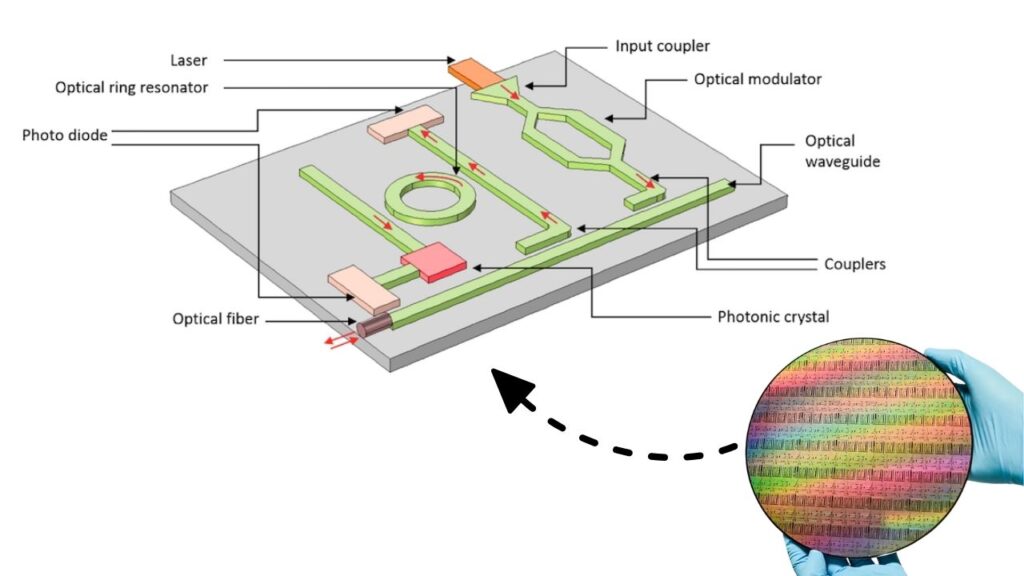
Why is this a big deal?
- Unmatched Speed: Light travels much faster and farther than electricity, especially over longer distances.
- Massive Bandwidth: The OCI chiplet can handle up to 4 terabits per second—enough to transfer thousands of high-definition movies every second.
- Energy Savings: Using light instead of electricity reduces energy loss, meaning less heat and lower power bills for data centers.
- Scalability: As artificial intelligence (AI), cloud computing, and high-performance computing (HPC) demand more data, optical chiplets make it possible to scale up without running into the limits of copper wires.
The Evolution of Chip-to-Chip Communication
Traditionally, computer chips talk to each other using copper wires. These wires are fast, but as computers become more powerful and data-hungry, copper is hitting its limits. Signals lose strength over distance, and the wires generate heat, which wastes energy and requires expensive cooling.
Optical communication—using light instead of electricity—solves these problems. Light can travel long distances without losing strength, and it doesn’t generate nearly as much heat. This is why fiber optic cables are already used for internet connections around the world. Now, Intel is bringing this technology inside computers themselves.
How Does the Optical Chiplet Work?
Let’s break it down step by step:
1. Silicon Photonics Integration

The OCI chiplet contains a Photonic Integrated Circuit (PIC) and an Electrical Integrated Circuit (EIC). The PIC uses tiny lasers and modulators to turn electrical signals into light signals. The EIC handles the traditional electronic part of the job.
2. Dense Wavelength-Division Multiplexing (DWDM)
The chiplet uses a method called DWDM, which allows multiple light signals—each at a different color or wavelength—to travel through the same fiber at the same time. This is how the chiplet can support 64 channels, each running at 32 Gbps, for a total of 4 Tbps.
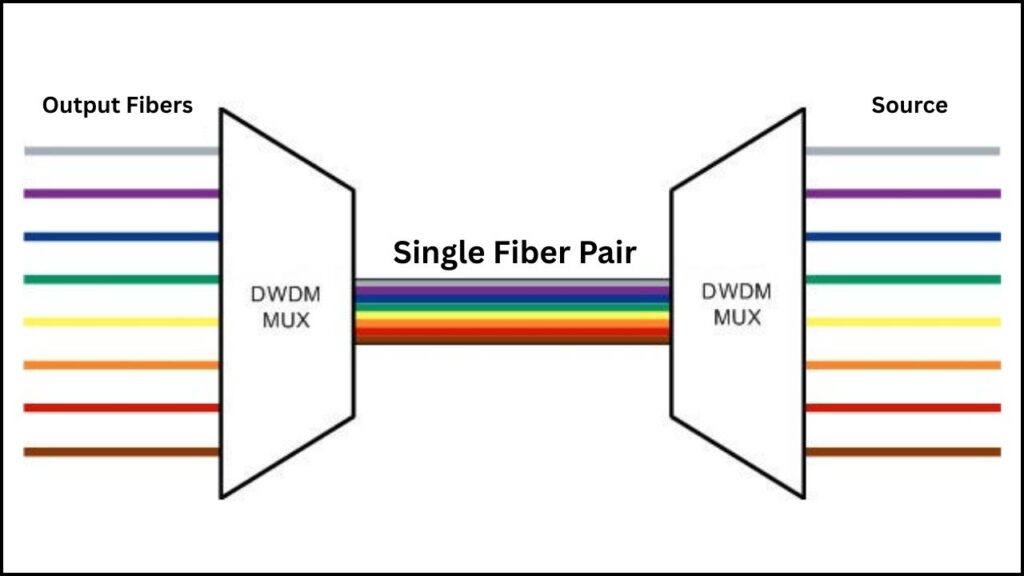
3. Long-Distance, High-Speed Data Transfer
Because light doesn’t lose strength like electricity does, the OCI chiplet can send data up to 100 meters—enough to connect servers across a large data center, or even between different racks.
4. Co-Packaged with CPUs and GPUs
The chiplet is designed to sit right next to the main processor (CPU, GPU, or even new types like IPUs) on the same board. This minimizes the distance data has to travel inside the computer, reducing both delay (latency) and energy use.
Why Is This Important for the Tech Industry?
For Data Centers and Cloud Providers
- Lower Operating Costs: Less energy consumed means lower electricity bills and less need for expensive cooling systems.
- Higher Performance: Data can move faster between servers, supporting the biggest AI and big data applications.
- Future-Proof Infrastructure: As data demands explode, optical interconnects will be essential for scaling up data centers.
For AI and High-Performance Computing (HPC)
- Faster AI Training: Large AI models, like those used for self-driving cars or language translation, need to move huge amounts of data between processors. The OCI chiplet makes this possible at speeds electrical connections can’t match.
- Flexible Resource Sharing: Optical links make it easier to connect different types of processors and memory in new, more efficient ways.
For Technology Professionals and Engineers
- New Design Possibilities: The chiplet supports current and future standards (PCIe Gen5 and Gen6), making it adaptable for the next generation of hardware.
- Proven Reliability: Intel’s silicon photonics platform is already widely used in data centers, so professionals can trust its reliability.
Breaking Down the Technology: Step-by-Step Guide
Step 1: Data Generation
A processor (CPU, GPU, or IPU) generates data that needs to be sent to another processor or memory module.
Step 2: Electrical-to-Optical Conversion
The OCI chiplet converts these electrical signals into light signals using its integrated lasers and modulators.
Step 3: Transmission Over Fiber
The light signals travel through standard single-mode fiber cables, carrying multiple channels of data at once, thanks to DWDM.
Step 4: Optical-to-Electrical Conversion
At the receiving end, another OCI chiplet converts the light signals back into electrical signals for the destination processor.
Step 5: Data Processing
The data is now ready for processing, storage, or further transmission—faster and more efficiently than ever before.
Real-World Example: Transforming AI Data Centers
Consider a data center training a massive AI model. These models require enormous amounts of data to be shared between thousands of processors. Traditional copper connections can’t keep up—they’re too slow and use too much power.
With Intel’s OCI chiplet:
- Data moves between processors at 4 Tbps.
- The system uses less energy, so it’s cheaper to run and better for the environment.
- The data center can grow larger and handle more complex AI tasks, supporting everything from autonomous vehicles to advanced medical research.
The Science Behind the Speed: Why Light Beats Copper
Copper wires have served us well for decades, but they’re reaching their physical limits. As data rates climb, copper suffers from signal loss, interference, and heat generation. Optical fibers, on the other hand, can carry much more data with minimal loss and almost no interference, even over long distances.
Intel’s innovation is to bring this proven technology inside the computer itself. By integrating optical chiplets right next to processors, Intel eliminates the bottlenecks that have held back data movement for years.
The Future: What Comes Next?
Intel’s OCI chiplet is currently a prototype, but the company is already working with select partners to integrate it into the next generation of servers and supercomputers. As the technology matures, we can expect to see:
- Wider Adoption: More data centers and cloud providers will adopt optical interconnects to keep up with growing data demands.
- New Architectures: Flexible, modular systems that can connect CPUs, GPUs, memory, and storage in new ways.
- Greener Computing: Lower energy use means a smaller carbon footprint for the world’s biggest data centers.
AI-Powered Chip Sets New Record in Brain-Like Computing Using Just Light and Silicon
Israeli Scientists Reveal the World’s First Brain-Like AI Chip That Teaches Itself
MIT Introduces New 3D Chip Design for Improved Speed and Power Efficiency
FAQs About Intel’s Optical Chiplet Breakthrough Promises 4 Tbps Light-Based Data Transfers
What is a chiplet?
A chiplet is a small, specialized chip that can be combined with other chips (like CPUs or GPUs) to add new features or boost performance.
How is optical data transfer different from electrical?
Optical data transfer uses light (usually lasers) to send information through fiber optic cables, while electrical data transfer uses electrical signals through copper wires. Light can travel faster and farther with less energy loss.
Why does this matter for AI and cloud computing?
AI and cloud computing require moving huge amounts of data quickly between processors and memory. Optical chiplets make this possible, supporting larger, faster, and more efficient systems.
Is Intel’s OCI chiplet available now?
The OCI chiplet is currently in the prototype stage. Intel is working with select partners to integrate it into next-generation systems.
Will this technology replace all copper connections?
Not immediately. Copper will still be used for short distances and lower-speed connections, but optical technology is expected to take over for high-speed, long-distance data transfer.
How does this benefit the environment?
By reducing energy consumption and heat generation, optical chiplets help data centers lower their carbon footprint, making computing more sustainable.
What skills will professionals need in this new era?
Engineers and IT professionals will benefit from understanding photonics, optical networking, and advanced chip design as these technologies become more widespread.
Practical Advice for Professionals
- Stay Updated: Keep an eye on developments in silicon photonics and optical networking. These skills will be increasingly valuable as the technology matures.
- Plan for Upgrades: If you manage IT infrastructure, start considering how optical interconnects could fit into your future hardware plans.
- Invest in Training: Learning about photonics and high-speed networking will give you an edge as these technologies become mainstream.
